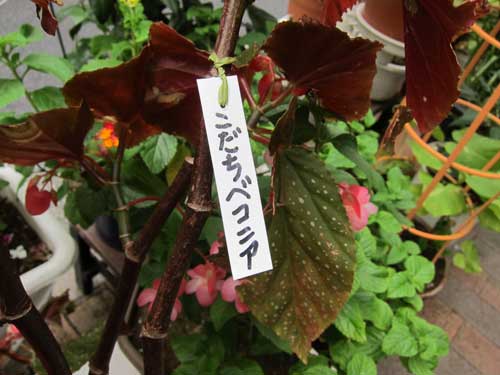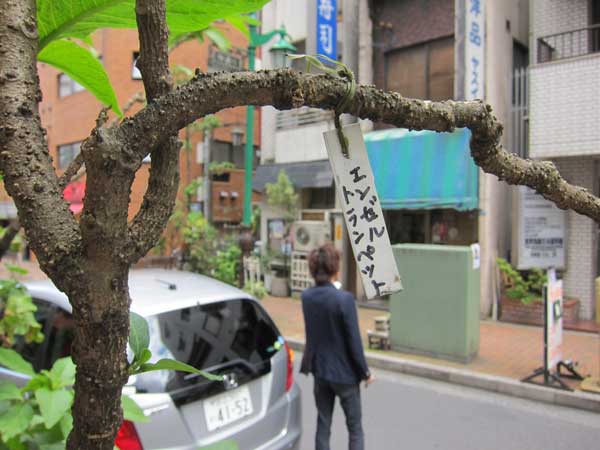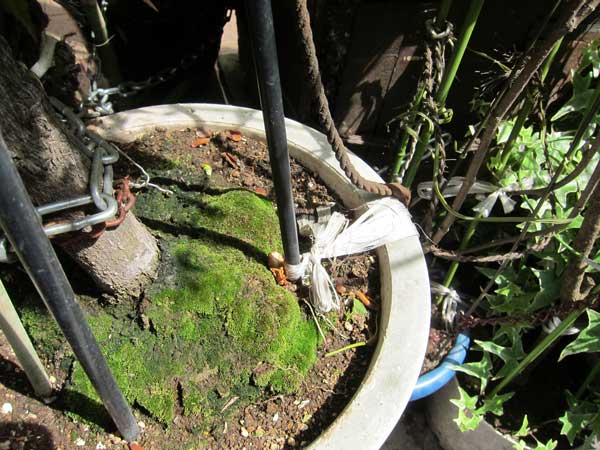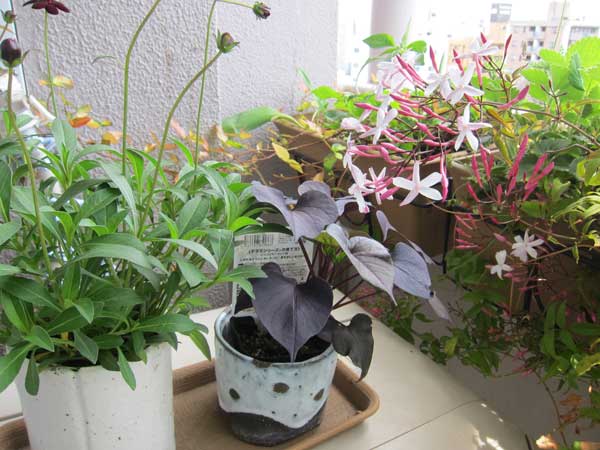
This Shinjuku ni-chome sidewalk garden is exceptional in its size, care, and labeling. The gardener lives in a former shop in an old building on what is now a busy entertainment district. From the sidewalk, you can see what appears to be merchandise, t-shirts and a few dress shirts, in the front room open to the street.

The gardener and his wife are often visible in the inner room which is partly visible. This type of retail/residential architecture is very Tokyo mid-century, and there are examples in many neighborhoods of former shop owners living in these spaces, some with remnants of their former businesses.

What I love about this sidewalk garden is the gardener’s obvious care and attention to creating a display of many plants. Nearly all of the pots rests on stools or low tables, with the highest ones closest to the road and the lower ones facing pedestrians on the sidewalk.

I am also amazed that the plants are all labeled, even the most obvious ones such as “rose” (バラ). I asked the older man why he labeled them, and he said that people often ask him and he doesn’t always remember the plant name.

The other amazing thing about the garden is just how big it is. There is easily more than one hundred plants. In addition to cover five meters or more in front of his building and his neighbors, he also expanded to an equally large area across the street. He is often outside watering and taking care of the plants.

I admire this gardener’s love for plants, his colonizing public space, and adding beauty in a crowded neighborhood.











